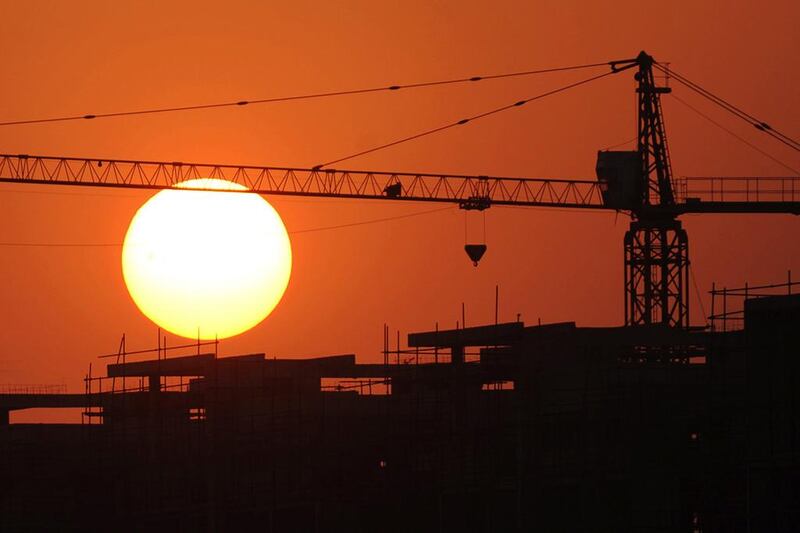Property markets across the Arabian Gulf are facing a “perfect storm” as a result of overbuilding by its developers, and continued softening demand as market sentiment shifts on the back of lower oil prices, according to AT Kearney.
The management consultancy has published a new report which states that the value of projects currently in the construction phase is four times higher than the value of all developments completed within the past decade.
And the value of projects at an earlier stage of development equates to about 10 years’ worth of work.
“Each year between 2016 and 2020, this pipeline would deliver anywhere between seven and 12 times the real estate value delivered yearly between 2007 and 2009,” the report said.
By December 2015, the GCC had US$2 trillion worth of property projects in the pipeline, and property accounts for 70 per cent of the construction sector’s workload for this year and next.
However, AT Kearney added that delivery is patchy. Since 2006, the value of regional projects that have been cancelled is twice as high as those that have completed.
This wave of new projects looks set to be delivered in a weaker market, AT Kearney’s report said, with average GDP growth set to slow to about 3.2 per cent between now and 2020 – considerably below the 8 per cent per year that was being achieved in the run-up to 2008.
And although population growth remains robust, the 2.9 per cent increase that the Economist Intelligence Unit is forecasting over the next five years is just one-third of the level experienced before the 2008 crisis.
Liquidity conditions are also tighter, with growth in banking loans set to slow by a third over the next three years, according to Fitch Ratings.
AT Kearney’s report argued that developers have little choice but to transform working methods if they are to successfully deliver new schemes.
“There is little evidence the real estate industry is preparing for the next market cycle. Developers need to probe for disruptive innovation beyond the traditional boundaries of their industry and beyond their known value chain,” said Federico Mariscotti, a vice president at AT Kearney.
It suggested a range of changes to working methods, including the use of construction techniques developed in space by sintering sand – the process of compacting and forming a solid mass of material by heat and/or pressure without melting it to the point of liquefaction – as well as calling for better collaboration between developers, architects and contractors.
It suggests a different approach to tendering, by offering a package of, say, three major projects to be delivered over several years to allow the different parties – including the facilities manager responsible for running the buildings – to create “value networks” with shared ideas and goals.
“Developers are thinking about this,” Mr Mariscotti said.
He added that the biggest developers could get through the next few years without changing just by taking more market share and forcing smaller firms out.
“But if someone makes a move to do something radically different – setting up this value network, tampering with innovation and doing more analytics about what customers want – then they can really break out.”
Douglas Pickles, a director at AT Kearney, said the industry’s current supply chain was “inherently inefficient”.
“This commonly accepted model leads to design changes on up to 40 per cent of project specs and delays of six months or longer,” he said.
“The future belongs to those developers who can tackle these inefficiencies by introducing innovation and increase upfront collaboration within their supply chain.”
Analysts are predicting that the harsher environment faced by property companies in the UAE could dampen profits when the companies report second quarter results for 2016.
Although Emaar Properties reported a 17 per cent increase in net profit in the first quarter to Dh1.2bn, analysts from Bahrain-based Securities & Investment Company are forecasting a 10 per cent year-on-year decline in second quarter profit to Dh1.06bn.
EFG Hermes, meanwhile, is predicting a disappointing set of numbers from Damac Properties on the back of lower sales. It has forecast a 45 per cent drop in profit to Dh771m – down from Dh1.4bn in the same period lats year.
mfahy@thenational.ae
Follow The National's Business section on Twitter







